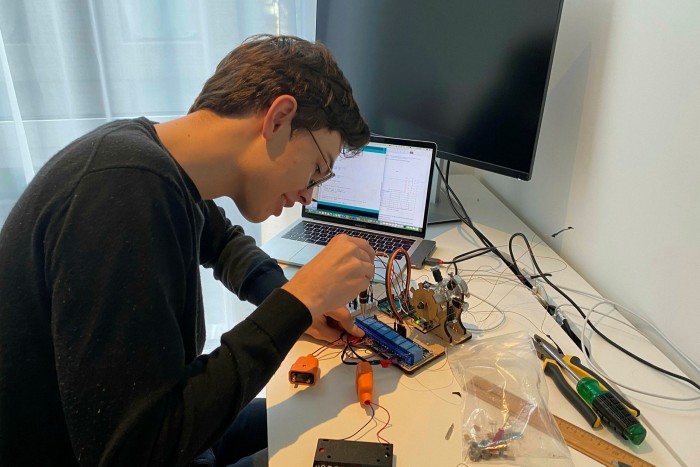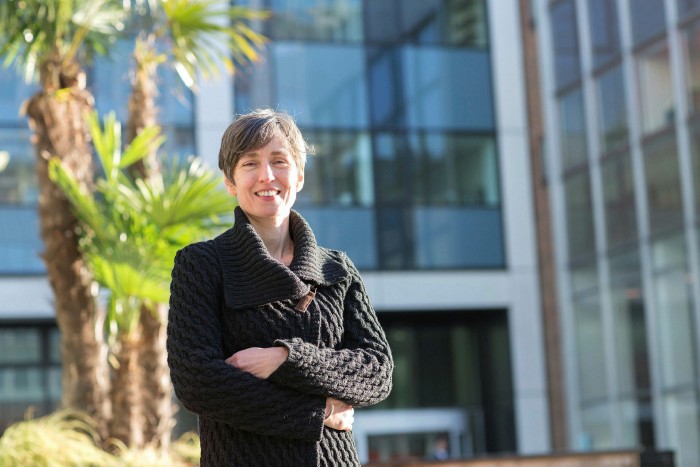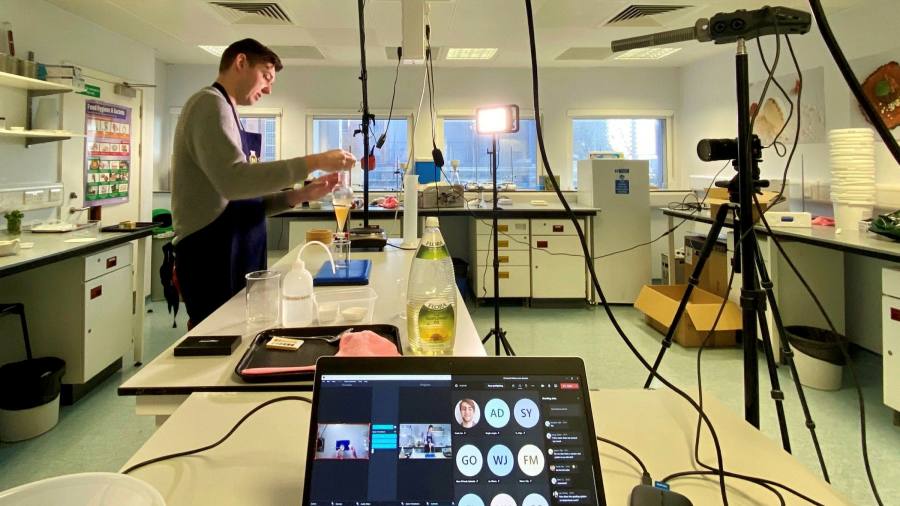When universities were abruptly closed and lectures moved online last year, many students unsurprisingly felt less happy about the education they were receiving. But at Imperial College London the reverse was true.
In a closely watched National Student Survey last year, student satisfaction actually increased at the science-focused institution, bucking the overall trend. As a result, Imperial jumped 80 places in NSS’s student satisfaction rankings of UK universities.
According to vice-provost for education Emma McCoy, the success is because lecturers did more than just move traditional classes online.
Instead, they experimented with new ways to learn virtually. One earth science lecturer collected data from international locations to create 3D computer worlds for virtual field trips.
Several departments sent “lab-in-a-box” kits, which replicated laboratory equipment in miniature, to students so they could perform experiments such as understanding the behaviour of electric waves and thermal properties of materials in their homes.
Now as restrictions are lifted, universities in the UK are again adjusting to a changed education landscape. Face-to-face seminars, online lectures and timetables that offer students flexibility to combine the two are not just possible, but demanded.
“It’s heightened their expectations,” McCoy says. “Students that were here last year saw we could do things remotely, and they want to see that flexibility maintained.”
In-person classes remain a priority, though, as most UK universities opt to return laboratories and seminars to campus, in response to student demand.
At the London School of Economics, Josie Stephens, Students’ Union president, says students have “really suffered” from a lack of human contact — especially the chance to meet peers and grab a coffee after class — and have called “overwhelmingly” for a return to face-to-face learning.
“You pay so much money to come to university, and you might only have four in-person hours [a week],” she says. “All of our subjects are centred around debate and discussion, which are much harder over Zoom.”

But the switch does not mean things are back to normal. Even those institutions that now make a virtue of being in-person are still holding large lectures virtually, and many plan to continue doing so permanently.
At University College London, as well as Imperial and LSE, this means students have the option to join some sessions online or in-person, in a “blended-by-design approach”, enabled by specially rigged lecture theatres and additional staff training.
“We’d like to see a lasting shift to a more digitally enriched approach to education,” Fiona Strawbridge, UCL’s director of digital education, says. “Digital approaches can successfully augment, enhance and even replace some traditional approaches.”
Students appreciate the flexibility. At Coventry University in the Midlands, Obinna Okereke, the Students’ Union vice-president for education, enjoys being able to watch a 9am lecture with a coffee from home rather than trekking into campus. “There’s that social experience, we can’t dismiss that,” he says. “But I have an option.”
The union’s vice-president for welfare, Indica Norcup, adds that more flexibility could better prepare students for work. “We’re encouraging students to think a bit more on their own,” she says. “I was forced to get myself up in the morning, organise stuff by myself, and I found that beneficial.”
There are also benefits for disabled students, who before the pandemic might have struggled to get to in-person lectures. At Manchester Metropolitan University, Students’ Union president Letitia Jones says as a group they improved their grades significantly during lockdown when they were able to access teaching remotely, rather than be forced to miss lectures or travel for hours to sit in uncomfortable classrooms.

Seeing professors make accommodations has made student demands more ambitious, she says. “We’re now asking: can we keep this going to make sure our disabled students are feeling heard with their frustrations, and are able to access the classes they’ve paid for?”
Striking a balance between the flexibility of blended learning and the benefits of a buzzing campus is tricky. Coventry’s deputy vice-chancellor for education, Guy Daly, says staff have written to students urging them to come to campus. He makes a comparison with joining a gym.
“Just because a student has signed up, they’ve still got to go to the gym and do the exercise,” he says. “It’s not just about what’s going on in the classroom, it’s about mental health. There is an element of tough love.”
The Office for Students, the regulator for universities, is reviewing how it assesses universities’ performance in the new normal of online and offline learning.
Susan Lapworth, director of regulation at the OfS, says the majority of complaints it receives are not about bad decisions on whether to deliver education in-person or digitally, but poor communication to students about what to expect.
“It’s not for us to tell them how to balance those issues and what teaching methods to adopt, but they need to listen to their students and what their preferences might be,” she says.
Both teaching staff and senior administrators acknowledge their workload has increased. McCoy says hybrid learning at Imperial — where students are encouraged but not required to attend lectures in person — adds to the workload. “I have to be a little bit more organised to make it work.”

Strawbridge acknowledges preparing staff to use new technologies takes time too. “This can be extra challenging when workloads are already high,” she says.
Moving lectures and classes online has also led to legal complications around performance and intellectual property rights.
Jenny Lennox, the bargaining and negotiations official at the University and College Union, which represents staff, says one in five academics are working an additional two days or more a week with no downtime. But it is also unclear who retains the rights to repurpose, share or sell lecture materials — on university systems or even more widely — once they are uploaded.
“There’s a real mixed bag about what we’ve got in agreements,” she says of university policies on data. “[The universities’ management are] not asking questions about how it’s going to be used, and these are moral and ethical questions. The failure to ask is quite worrying.”
The result, she says, is that some academics are circumventing the process and putting course material on to different, non-organisational platforms such as YouTube, so they are more assured of their control over it.
After two years of disruption, university employees are feeling the strain. On December 1, members of the UCU began a three-day strike over pay, working condition and pensions.
Although the industrial action meant more disruption for students after a difficult two years, a survey by the National Union of Students suggested three-quarters of students supported lecturers. Jones says the efforts of lecturers to go the extra mile to teach during lockdown, and the feeling of solidarity as staff and students adapted to difficult circumstances together, mean young people are more engaged with the workplace challenges of staff.
Allison Littlejohn, an academic specialising in learning technology, says the blending of school and home is also likely to complicate the relationship between work and life, prompting students to demand more consideration of mental health and work-life balance from their future employers.
Some 93 per cent of students and recent graduates believe employers should be doing more to support employees’ mental wellbeing, according to research by Bright Network, a graduate careers organisation. A clear majority also say they needed to provide more flexibility and mentoring.
Ben Triggs, head of marketing at Bright Network, says the majority of new graduates want to have options to work remotely while keeping social ties and “water cooler” conversations that provide informal learning opportunities.
For Jones, watching universities shift quickly to online learning when circumstances changed has given students a “bargaining chip”. Before, she says, requests for flexible learning, or even working from home for a few days, would be deemed unmanageable. Young people are unlikely to accept that any longer.
“We saw how quickly the decision [to adapt] can be made,” Jones says. “Students can leverage that to get things they were previously demanding.”


